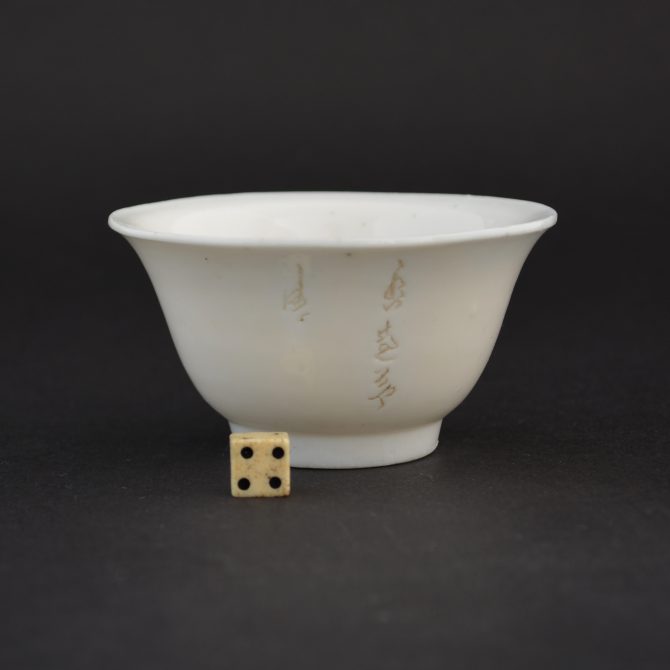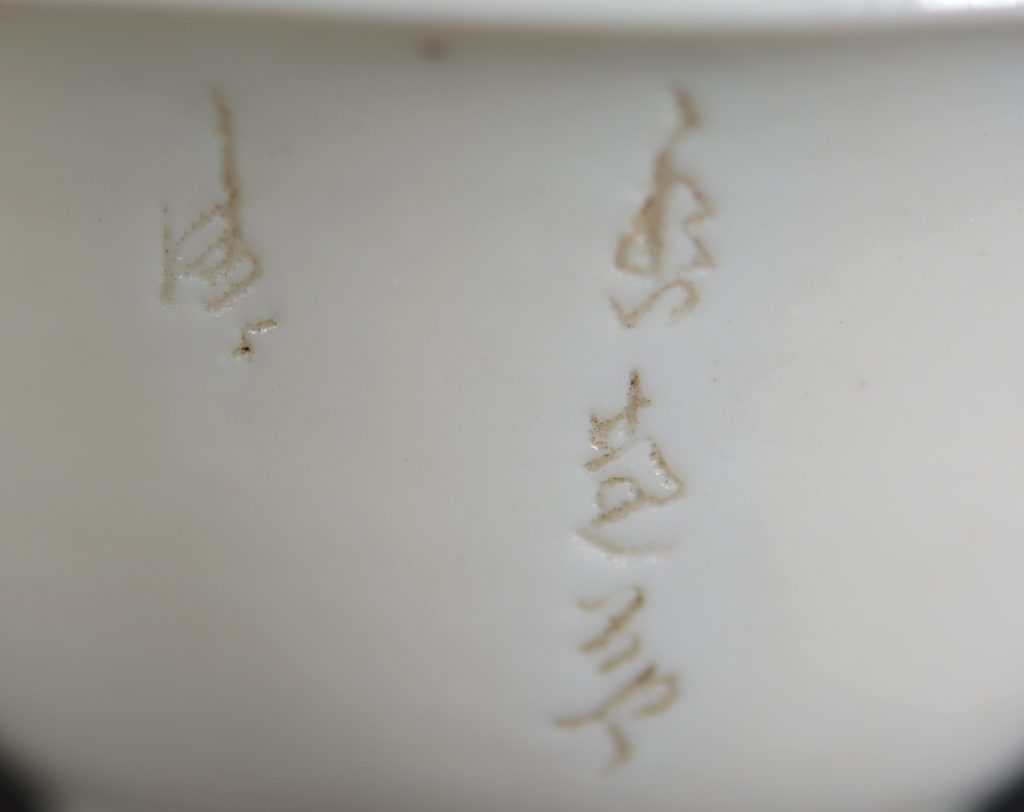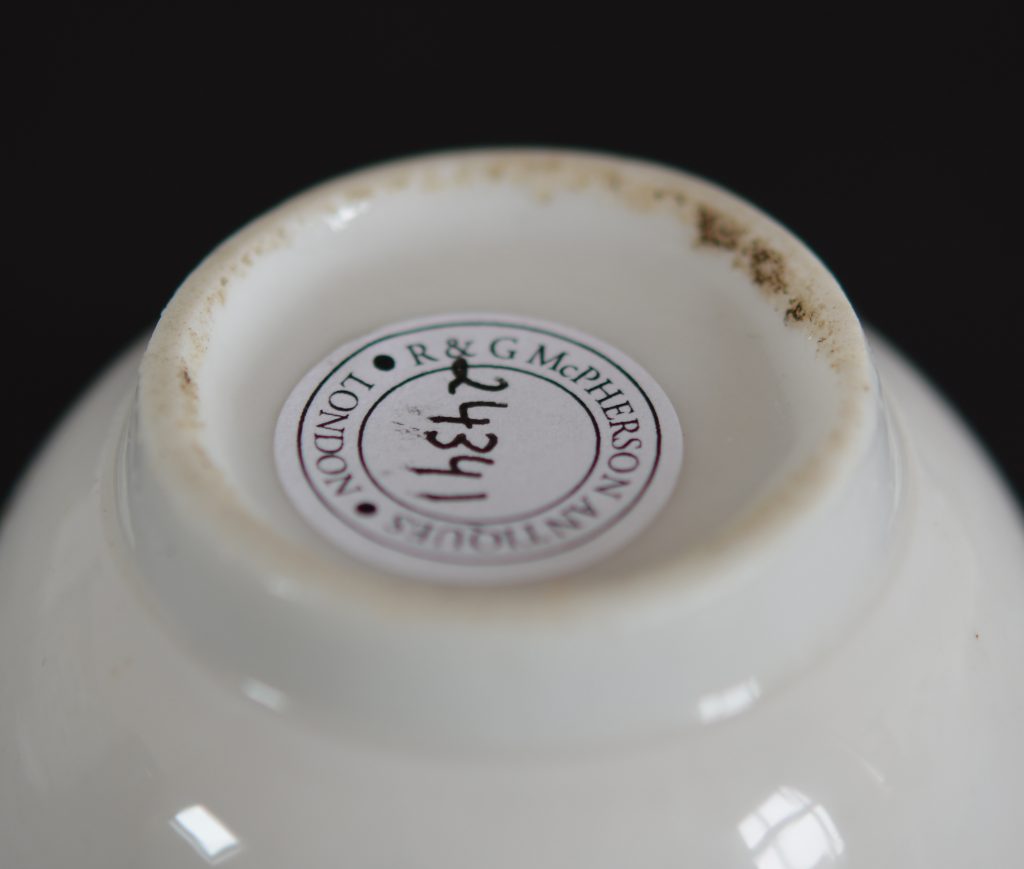
SHUNZHI or KANGXI c.1645 – 1720 Blanc de Chine Porcelain
An Inscribed Blanc de Chine Cup, Dehua Kilns, Fujian Province. Early Qing Dynasty, Shunzhi or Kangxi Period c.1645-1720. The Exterior with a Two Line Poem in Caoshu Script.
SOLD
- Condition
- In perfect condition.
- Size
- Diameter : 7 1/2 cm (3 inches)
- Provenance
- N/A
- Stock number
- 24341
Information
Cursive Script on Blanc de Chine :
Inscription through the glaze are quite common on Blanc de Chine porcelain. Done when the Glaze was not quite dry, these inscription are in what is referred to as `cursive` or `grass script` and would have originally had either black or red seal wax rubbed into to the incised characters to make them clearer to read. These inscriptions, typically just two lines long are normally poems related to the pleasure of drinking.
Chinese cursive script caoshu, also known as the Grass Script (an overly literal translation), is a style of Chinese calligraphy. The name originates from the Chinese character for "grass" cao, which also means loose and sketchy. Cursive script is faster to write than other styles, but also harder to read. It is quite often the case that people who are capable of reading printed Chinese find themselves completely illiterate when confronted with this particular style of writing. Cursive script originated in China during the Han dynasty through Jìn Dynasty period. An early form of cursive developed as a cursory way to write the popular and not yet mature clerical script. Faster ways to write characters developed and there were various styles of cursive script developed.
Blanc de Chine Porcelain :
The porcelain known in the West as Blanc de Chine was produced 300 miles south of the main Chinese kiln complex of Jingdezhen. The term refers to the fine grain white porcelain made at the kilns situated near Dehua in the coastal province of Fujian, these kilns also produced other types of porcelain. A rather freely painted blue and white ware, porcelain with brightly coloured `Swatow` type enamels as well as pieces with a brown iron-rich glaze. However it is the white blanc de Chine wares that have made these kilns famous. The quality and colour achieved by the Dehua potters was partly due to the local porcelain stone, it was unusually pure and was used without kaolin being added. This, combined with a low iron content and other chemical factors within the body as well as the glaze, enabled the potters to produce superb ivory-white porcelain.


